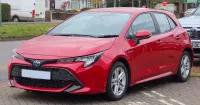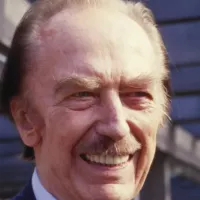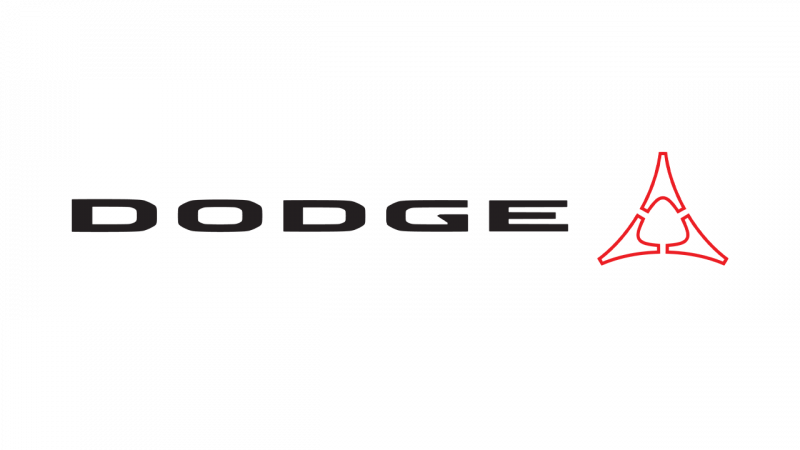Dodge is an American automobile brand and a division of Stellantis, headquartered in Auburn Hills, Michigan. Historically, Dodge vehicles included performance cars and served as Chrysler's mid-priced brand, positioned above Plymouth. The brand is known for its focus on powerful engines and sporty designs, catering to a customer base interested in performance and style.
1900: Dodge Brothers Company Founded
In 1900, Horace and John Dodge founded the Dodge Brothers Company in Detroit.
1902: Oldsmobile Transmission Contract
In 1902, the Dodge brothers won a contract to produce transmissions for Ransom E. Olds' company, Oldsmobile.
1903: Ford Component Supply Contract
In 1903, the Dodge brothers rejected a second contract from Oldsmobile to manufacture engines for the Ford Motor Company, which would be in debt to the brothers. Henry Ford selected the Dodge brothers to supply a wide range of components for his original Model A (1903–04) comprising the entire chassis.
1910: Dodge Main Factory Built
By 1910 the Dodge Main factory was built in Hamtramck.
1913: Dodge Brothers Motor Company Established
In 1913, the Dodge Brothers Motor Company was established.
1914: First Dodge Car Introduced
By 1914, John and Horace designed and introduced the first car of their own, the four-cylinder Dodge Model 30-35 touring car.
1914: Dodge Brothers Automobiles
In 1914, the Dodge Brothers Company began building complete automobiles under the "Dodge Brothers" brand.
1916: Dodge Brothers Cars Ranked Second
Dodge Brothers cars were ranked second in U.S. sales as early as 1916.
1916: Military service
In 1916, the Dodge Brothers vehicles won acclaim for their durability in military service in the U.S. Army's Pancho Villa Expedition.
January 1920: John Dodge Died
In January 1920, John Dodge died from the Spanish flu.
1920: John and Horace Dodge Dead
In 1920, John Dodge died of pneumonia in January and Horace Dodge died of cirrhosis in December.
1921: Truck Line Expansion and Graham Brothers Partnership
In 1921, Dodge Brothers expanded its truck line and signed a contract for Dodge's large dealer network to exclusively market trucks with bodies built by Graham Brothers.
1922: Dodge started assembling lorries in the UK
In 1922, Dodge started assembling lorries (trucks) in the United Kingdom from imported parts.
October 1, 1925: Dodge Brothers Acquired Interest in Graham Brothers
On October 1, 1925, Dodge Brothers, Inc., acquired a 51% interest in Graham Brothers, Inc.
1925: Dodge Brothers Sold to Dillon, Read & Co.
By 1925, Dodge Brothers sales had dropped. In 1925, the Dodge Brothers company was sold by the widows to the investment group Dillon, Read & Co.
1925: Company sold to Dillon, Read & Co.
In 1925, the Dodge Brothers Company was sold by their families to Dillon, Read & Co.
May 1, 1926: Dodge Brothers Acquired Remaining Interest in Graham Brothers
On May 1, 1926, Dodge Brothers acquired the remaining 49% of Graham Brothers.
November 1926: E.G. Wilmer Named Board Chairman
In November 1926, E.G. Wilmer, a banker, was named board chairman of Dodge Brothers.
1926: American Chrysler Corporation cars, including some Dodge models, were assembled from CKD kits at Antwerp
From 1926 to 1958, American Chrysler Corporation cars, including some Dodge models, were assembled from CKD kits at Antwerp.
1927: Dodge Brothers Sales Dropped
By 1927 Dodge Brothers' sales had dropped to thirteenth place in the industry selling the Dodge Fast Four.
1927: Graham Brothers Take Charge of Dodge Truck Manufacturing
In 1926, the Graham branch took charge of all of Dodge's truck manufacturing. A total of 60,000 trucks were built in 1927.
1927: Introduction of the Senior Six-Cylinder Line
In 1927, the new Senior six-cylinder line was introduced.
1927: End of Model T's Planetary Design
The best-selling Ford Model T retained an antiquated planetary design until its demise in 1927.
1928: Introduction of the Standard Six and Victory Six
For 1928, the four-cylinder line was dropped in favor of two lighter six-cylinder models, the Standard Six and Victory Six.
1928: Dodge Sold to Chrysler
In 1928 Dodge was sold to the new Chrysler Corporation. In one year Dodge progressed from thirteenth place in sales to seventh place by 1928.
January 2, 1929: Graham Badge Dropped
On January 2, 1929, Chrysler announced that the Graham Badge was dropped, and Chrysler was now building Dodge Brothers trucks.
1930: Addition of Eight-Cylinder Line
For 1930, Dodge added a new eight-cylinder line to replace the existing Senior six-cylinder line.
1930: Dodge Lineup Trimmed
For early 1930, Dodge's lineup was trimmed down to a core group of two lines and thirteen models, and prices started just above DeSoto.
1932: Factory Built in Los Angeles
In 1932 Chrysler built a factory in Los Angeles, California where Chrysler, DeSoto, Dodge, and Plymouth vehicles were built until the factory closed in 1971.
1933: Market Position Swap
In 1933, DeSoto and Dodge would swap places in the market, with Dodge dropping down between Plymouth and DeSoto.
1933: Manufacture of British chassis began
In 1933, Dodge began to manufacture a British chassis at its works in Kew, using American engines and gearboxes.
1933: Continuation of Six and Eight Models
Through 1933, Dodge continued the dual line with Six and Eight models, gradually streamlining and lengthening the cars.
1934: Replacement of Dodge Eight
For 1934, the Dodge Eight was replaced by a larger Dodge DeLuxe Six.
1934: Start of Airflow Styling Era
From 1934, the radical Airflow styling was the cause of depressed sales of Chryslers and DeSotos until 1937.
1935: Dodge DeLuxe Six Dropped
For 1935, the Dodge DeLuxe Six was dropped.
1935: "Wind Stream" Restyling
In 1935, the Dodge line, along with most of the corporation's output, was restyled in the "Wind Stream" look.
1936: Addition of Long-Wheelbase Edition
For 1936, a long-wheelbase edition of the remaining Six was added and would remain a part of the lineup for many years.
1937: End of Airflow Styling Era
The radical Airflow styling was the cause of depressed sales of Chryslers and DeSotos from 1934 until 1937.
February 1942: Shutdown of passenger car assembly lines
In February 1942, Japan's attack on Pearl Harbor forced the shutdown of Dodge's passenger car assembly lines in favor of war production.
1942: Increased war materiel production
From 1942 until 1945, Chrysler increased its production of war materiel. Dodge built over 400,000 trucks for the war, including light 4x4s and light-medium 6x6 WC-series trucks.
1942: Lightly facelifted revisions
Like almost every other automaker, Dodge sold lightly facelifted revisions of its 1942 design through the 1948 season.
1945: Restart of civilian production
Civilian production at Dodge was restarted by late 1945, in time for the 1946 model year, amid a seller's market due to a lack of new cars during the war.
1945: Introduction of the Power Wagon
In 1945, Dodge introduced the Power Wagon, a civilian model that carried over the reputation of the WC-series after the war, with minimal modifications for the 1946 model year.
1948: AMAG in Switzerland building Chryslers and Dodges
From 1948 to 1972, AMAG in Switzerland was license-building CKD models of Chryslers and Dodges.
1949: Introduction of the Dodge 100 "Kew" truck
In 1949, the Dodge 100 "Kew" truck (1949–1957), nicknamed the "parrot nose", was introduced.
1953: New bodies based on the Plymouth
In 1953, Dodge's new bodies were smaller and based on the Plymouth. During this period Styling began to change under the direction of corporate design chief Virgil Exner.
1954: Loan from Prudential
Chrysler borrowed $250 million from Prudential in 1954 to finance expansion, acquisition, and updating the outdated styling of their car lines.
1954: Introduction of the PowerFlite transmission
In 1954, Dodge sales dropped and the stubby styling did not go over well with the public. The fully automatic PowerFlite transmission was also introduced.
1955: Development of Forward Look styling
In 1955, Exner led the development of the new corporate "Forward Look" styling, starting a new era for Dodge.
1956: Introduction of the 4-door pillarless hardtop
In 1956, Dodge introduced the 4-door pillarless hardtop in all three Dodge series, Custom Royal, Royal, and Coronet. Dodge's pillarless models were all badged "Lancer."
1957: Introduction of TorqueFlite Transmission
In 1957, Dodge introduced a new automatic transmission, the three-speed TorqueFlite.
1957: Introduction of the 200 and 300 series
In 1957, the 200 series (1957–1963) and the cab-over 300 series (1957–1965) Dodges were built at Kew.
1958: American Chrysler Corporation cars, including some Dodge models, were assembled from CKD kits at Rotterdam
From 1958 to 1970, American Chrysler Corporation cars, including some Dodge models, were assembled from CKD kits at Rotterdam.
1960: Introduction of the Commer SpaceVan
In 1960, the Commer SpaceVan (1960–1983) was introduced and later became a Dodge for its final years.
1961: Entry into the compact car field
In 1961, Dodge entered the compact car field with the Lancer, a variation on Plymouth's Valiant.
1961: Introduction of the Commer Walk-Thru
In 1961, the Commer Walk-Thru (1961–1979) was introduced and later became a Dodge for its final years.
1961: Introduction of the Custom 880
In the fall of 1961, after Dodge dealers complained about not having a true full-size car, the Custom 880 was hurried into production.
1962: Downsizing of Dodge and Plymouth full-size lines
Chrysler made an ill-advised move to downsize the Dodge and Plymouth full-size lines for 1962, resulting in a loss of sales.
1962: Use of Chrysler Newport body for Custom 880
In 1962, the Custom 880 used the 1962 Chrysler Newport body with the 1961 Dodge front end and interior.
1963: Dodge Dart Introduction
In 1963, Dodge began producing compact cars such as the Dart.
1963: Introduction of the 400 series
In 1963, the 400 series (1963–1965) was introduced as a version of the American D series medium-duty models.
1963: Parking Brake
The rear-view mirror was mounted on the windshield rather than from the roof. The Grille's parking lamps were cast in amber, whereas the previous years had clear lenses with amber-colored bulbs.A new foot-operated parking brake replaced the under-dash T-handle used since the Dart's 1963 introduction as a compact car.
1964: Chrysler acquired a stake in the Rootes Group
In 1964, Chrysler acquired its first stake in the British Rootes Group and decided to consolidate truck production at Rootes' factory in Dunstable.
1965: Barreiros in Spain building Dodge Darts
From 1965, Barreiros in Spain started building Dodge Darts as the Barreiros Dart.
1965: Coronet and Charger Production
In 1965, Dodge began producing midsize cars such as the Coronet and Charger.
1965: Introduction of new mid-size models
In 1965, Dodge revived the Coronet nameplate as a new mid-size model and later added the Charger, a sporty fastback version.
1965: New full-size body production
In 1965, a completely new full-size body was put into production, with the Polara entering the medium price class and the Monaco added as the top series.
1965: Discontinuation of British assembly of the 400 series
In 1965, the British assembly of the 400 series was discontinued due to declining sales of normal-control trucks.
1965: Original mention of the coronet
In a reversal of what happened in 1965, the St. Regis was an upsized Coronet.
1967: Production of the 500 series transferred to Dunstable
In 1967, production of the 500 series was transferred to Dunstable.
1969: Chrysler acquired full control of Barreiros
By 1969, Chrysler had acquired full control of Barreiros, and Darts were being exported to other European countries under the Dodge name.
1969: Employment of Fuselage Styling
From 1969 through 1973, unique "fuselage" styling was employed for full-size models.
1969: Dodge car production began in Brazil
In 1969, Dodge cars began production in Brazil, featuring models such as Dart, Charger, Magnum, and LeBaron.
1970: Spanish-built Dart was replaced by the Barreiros/Dodge 3700
From 1970, the Spanish-built Dart was replaced by the Barreiros/Dodge 3700 which remained in production until 1977.
1970: Entry into the pony car market
In 1970, Dodge entered the pony car market segment with the Challenger coupe and convertible.
1970: Introduction of the 100 series "Commando" light truck
In 1970, the 100 series "Commando" light truck (1970–1989) developed by Rootes was initially marketed under five marques.
1970: Styling Reminiscent of the Original Challenger
In early 2008 Dodge released a new Challenger with styling reminiscent of the original 1970 Challenger.
1971: Factory Closed in Los Angeles
In 1971, the factory in Los Angeles, California where Chrysler, DeSoto, Dodge, and Plymouth vehicles were built closed.
1971: Increase in models imported from Mitsubishi
Starting in 1971, Dodge increased the number of models imported from Japanese partner Mitsubishi, first with a smaller Colt.
1972: Trucks sold as Dodge 300
From 1972 such trucks were sold as the Dodge 300, which was available as 4×2, 6×4, 8×2, and 8×4 rigids, as well as 4×2 semi-trailer tractors.
1973: Phoenix sedan discontinued
In 1973, the Phoenix sedan was discontinued, marking the last Dodge passenger car marketed in Australia until the 2006 re-entry.
1973: Dodge trucks sold at Canadian Plymouth dealers
Since 1973, Dodge trucks have been sold at Canadian Plymouth dealers and continued without change in 2000.
1973: Oil crisis causes significant changes
The 1973 oil crisis caused significant changes at Dodge, as well as Chrysler as a whole. Except for the Colt and Slant Six models of the Dart, Dodge's lineup was viewed as uneconomical.
1973: Oil Embargo
The 1973 oil embargo caused a slump in sales of American "gas guzzler" vehicles.
1973: End of Fuselage Styling
Unique fuselage styling was employed from 1969 through 1973 for the Polara and Monaco models.
1974: Toning down of fuselage styling
From 1974 through 1977, fuselage styling was toned down for the Polara and Monaco models.
1974: Minivan Prototype Rejection at Ford
In 1974, Henry Ford II rejected the minivan prototype developed by Lee Iacocca and Hal Sperlich during their time at Ford Motor Company. This rejection led Iacocca and Sperlich to later develop the Caravan and Voyager at Chrysler.
1975: Introduction of the Aspen
In mid-1975, the Dodge Aspen was introduced as a 1976 model as the Dart's replacement.
1975: Dodge Charger and Chrysler Cordoba share body
The 1975 model year had the Dodge Charger and Chrysler Cordoba share the same new body based on the B platform.
1975: Original Dodge Charger Model
The appearance was somewhat of a rounded-off Charger and was in response to getting a car that would be eligible for NASCAR that would be more aerodynamic, something that the 1975–1978 Charger was not.
January 1, 1976: Front disc brakes become standard
On January 1, 1976, front disc brakes became standard equipment on the Dodge Dart in accord with more stringent U.S. federal brake performance requirements.
April 1976: Dart Sport 360 tested against Corvette and Trans Am
Car & Driver magazine tested the Dart Sport 360 in the April 1976 issue, pitting it against the Chevrolet Corvette and Pontiac Trans Am.
1976: Final model year for Dodge Coronet
1976 was the final model year for the Dodge Coronet, with its body style choices limited to four-door models.
1976: Chrysler Europe rationalized its marques
In 1976, Chrysler Europe rationalized its marques, and all British-built commercial vehicles were sold as Dodges or Karriers.
1976: Revival of the Challenger
In 1976, Dodge revived the Challenger as a compact two-door hardtop with a four-cylinder engine, sourced from Mitsubishi's Galant line.
1976: Dodge Dart Production End
In 1976, production of the Dodge Dart ended.
1976: Aspen Introduced as Dart replacement
The Aspen was introduced in mid-1975 as a 1976 model to replace the Dart.This new design featured lighter weight resulting in slightly improved fuel economy.
1977: Production of the Barreiros/Dodge 3700 ended
From 1970 the Spanish-built Dart was replaced by the Barreiros/Dodge 3700 which remained in production until 1977.
1977: End of toned down fuselage styling
From 1974 through 1977 the fuselage styling was toned down for the Polara and Monaco models.
1977: Coronet renamed Monaco
In 1977, the mid-size Dodge Coronet was renamed Monaco, receiving cosmetic changes that provided a sales boost.
1978: Final Appearance of Dodge Monaco
During the following model year 1978, the mid-size Dodge Monaco would make its final appearance for all during the remainder of the 1970s.
1978: Omni and Horizon Introduction
In 1978, Chrysler introduced the Omni and Horizon front-wheel drive cars, challenging the VW Rabbit. This was a critical time as the company was near bankruptcy and seeking government support. Despite initial poor sales due to the preference for larger cars, the Omni became an important factor in demonstrating Chrysler's effort to compete with imports and build fuel-efficient vehicles.
1978: Coronet and Charger Production End
In 1978, production of the Dodge Coronet and Charger ended.
1978: Introduction of the Dodge Magnum
In 1978, the Dodge Magnum was introduced to supplement the Dodge Charger and was the last vehicle to use the Chrysler B platform.
1978: End of 500 series/K-series production
The 500 series/K-series (1964–1978) tilt-cab production at Kew ended in 1978.
1979: Federal Loan Guarantees
In 1979, Chrysler's chairman, Lee Iacocca, requested and received federal loan guarantees from the United States Congress. This financial assistance was crucial in preventing the company from filing for bankruptcy, allowing Chrysler to reorganize and develop new models.
1979: Last Dodge offering since AT4/D5N trucks
In 1979, the AT4/D5N trucks were the last Dodge offering in the Australian market before the 2006 re-entry.
1979: Introduction of the Dodge 50 series
In 1979, the Dodge 50 series (1979–1992) was introduced, replacing the earlier Walk-Thru.
1979: End of the Commer Walk-Thru production
In 1979, the production of the Commer Walk-Thru (1961–1979) ended.
1979: Dodge Main Factory Closure
The Dodge Main factory remained in Hamtramck until 1979.
1979: Replacement by St. Regis
The Dodge Royal Monaco was replaced by the St. Regis for 1979 following a one-year absence from the big car market.
January 1980: Dodge main factory closed
In January 1980, the Dodge main factory located in Hamtramck, Michigan, which had been in operation since 1910, was closed.
1980: Final Aspen models
Despite improvements over time, the final Aspens were the 1980 models due to issues like severe body rust and engine/drive train problems.
1980: Dodge Mirada Production Begins
In 1980, Dodge began producing the Mirada, a mid-sized, rear-wheel drive coupe. Marketed as a sporty personal luxury car, the Mirada shared the Chrysler J platform with other Chrysler vehicles during a period of financial difficulty for the company.
1981: Shift to Front-Wheel Drive Designs
By 1981, Chrysler was transitioning to smaller, front-wheel drive designs. However, the rear-wheel drive Dodge Diplomat continued to sell, despite the company's shift in focus.
1981: Dodge Aries K platform Introduced
For the 1981 model year, Chrysler developed the Dodge Aries K platform compact and midsize cars. The K platform and its derivatives are credited with reviving Chrysler's business in the 1980s. One example was the Dodge Caravan.
1981: Manufacturer acquired by Volkswagen
In 1981, the Brazilian manufacturer of Dodge cars was acquired by Volkswagen.
November 1983: Introduction of the Dodge Caravan and Plymouth Voyager
In November 1983, Chrysler introduced the Dodge Caravan and the Plymouth Voyager for the 1984 model year. They were marketed as the "Magic-wagons" and used the Chrysler S platform.
1983: End of Mirada Production
In 1983, Dodge ceased production of the Mirada. Production of the Mirada reached just under 53,000 units, staying relatively unchanged over four years of production, except for paint colors and engines.
1983: End of the Commer SpaceVan production
In 1983, the production of the Commer SpaceVan (1960–1983) ended.
1984: Daytona Trim Lines Available
In 1984, Dodge offered the Daytona in three trim lines: standard, Turbo, and Turbo Z. The Daytona Turbo was included on Car and Driver magazine's 10Best list for 1984. The Daytona and Chrysler Laser were available with the Chrysler electronic voice alert system through 1987.
1984: Dodge Caravan Model Year
The Dodge Caravan was introduced for the 1984 model year. The Caravan helped save Chrysler and created the minivan market segment. The Caravan used the Chrysler S platform.
1985: Increased Horsepower for 2.2L Turbo I Engine
In 1985, the 2.2 L Turbo I engine's horsepower was increased to 146 hp (109 kW) in the Daytona.
1986: 2.5L K Engine added to Daytona
In 1986, Dodge added the 100 hp 2.5 L K engine to the Daytona. The Chrysler Laser was dropped mid-year and replaced with the Pacifica trim.
1986: Development of Second-Generation Ram Begins
In 1986, Dodge began developing the second-generation Ram pickup. The initial concept, the "Louisville Slugger," aimed for a modular platform for a full-size truck and van.
1987: Introduction of Dodge Shadow/Plymouth Sundance
In 1987, Dodge introduced the Dodge Shadow/Plymouth Sundance as replacements for the Omni and Horizon models.
1987: Daytona Restyling and Shelby Version Introduction
In 1987, Dodge restyled the Daytona externally and introduced the Shelby Z trim level, featuring pop-up headlights and the Turbo II intercooled version of the 2.2 L Chrysler K engine. The Daytona Turbo was also available with the Chrysler electronic voice alert system through 1987.
1987: Dodge name dropped from inherited models
In 1987, the Dodge name was dropped from the remaining inherited models (50 and Commando), which became Renaults.
1988: Dodge Diplomat Airbag Introduction
From mid-1988, the Dodge Diplomat, along with the Chrysler LeBaron and Fifth Avenue, were among the first Chrysler products to include a driver's side airbag as standard equipment. They also offered a tilt steering column with an airbag.
1988: Dynasty and New Yorker Debut
In 1988, Dodge debuted the Dynasty and Chrysler New Yorker, which were the first mass-produced cars to have a fully multiplexed, fiber-optic wiring buss connecting all electronic accessories and controllers.
1988: Dodge Dynasty sold as Chrysler Dynasty in Canada
In 1988, the Dodge Dynasty was sold in Canada as the Chrysler Dynasty at both Plymouth and Dodge dealers.
1989: End of M-Body Production
In 1989, the Dodge Diplomat, part of the M-body line, was discontinued due to Chrysler CEO Lee Iacocca's lack of investment in the line, despite strong sales. Fewer private customers purchased the Diplomat as the 1980s progressed.
1989: Ultradrive Transmission Debut
In 1989, the new electronically controlled four-speed automatic transmission, known as the Ultradrive or A604, debuted and became the sole transmission for V6 models of the Dodge Dynasty.
1989: End of the 100 series "Commando" light truck production
In 1989, the production of the 100 series "Commando" light truck (1970–1989) ended.
1990: Monaco Debuts
In 1990, Dodge debuted the Monaco, its first truly full-size car since the end of the M-body line. The Monaco was introduced as a 1990 model.
1990: End of Omni and Horizon Production
In 1990, Dodge ended the production of the Omni and Horizon models. They were replaced by the Dodge Shadow/Plymouth Sundance.
1992: Discontinuation of Monaco and Premier
In 1992, Dodge discontinued the Monaco and Premier models. However, the plant and executive behind the design led to the success of the LH Dodge Intrepid, Chrysler Concorde, and Eagle Vision.
1992: Dodge Viper Introduction and "The New Dodge" Campaign
In 1992, Dodge introduced the Viper and launched "The New Dodge" advertising campaign, showcasing new models and innovations. The campaign aimed to enhance Dodge's performance orientation, with ads narrated by Edward Herrmann.
1992: Brougham Package Offered on LE Models
In 1992, Dodge offered a "Brougham" package on Dynasty LE models, which added a padded "landau" vinyl roof.
1992: End of the Dodge 50 series production
In 1992, the production of the Dodge 50 series (1979–1992) ended.
1993: Phase-out of Dodge-Branded Mitsubishi Vehicles
By 1993, Dodge began phasing out Dodge-branded Mitsubishi vehicles, with the exception of the Dodge Stealth, which continued until 1996.
1993: Dynasty Production Ends
In 1993, Dodge ended production of the Dynasty. The vast majority of Dynasties sold to private customers had V6 engines, with four-cylinder models primarily going to the fleet market.
1993: Ram Sales Before Redesign
In 1993, sales of the Dodge Ram pickup were at 95,542 units before the redesign.
1994: Introduction of the Second-Generation Dodge Ram
In 1994, Dodge introduced the new second-generation Dodge Ram pickup with bold styling that departed from the boxy designs of previous trucks. It was named "Truck of the Year" by Motor Trend in 1994.
1995: Significant Increase in Ram Sales
In 1995, sales of the redesigned Dodge Ram increased significantly, reaching 410,000 units.
1996: Ram Sales Success and Feature in "Twister"
In 1996, Dodge Ram sales remained high at 411,000 units. The Ram was also prominently featured in the film "Twister".
1996: Dodge Stealth Production Ends
In 1996, Dodge ceased production of the Dodge Stealth, completing the phase-out of Dodge-branded Mitsubishi vehicles.
1996: Stratus on Car and Driver's Ten Best List
In 1996, the Dodge Stratus, along with the Plymouth Breeze and Chrysler Cirrus, were all on Car and Driver magazine's Ten Best list.
1997: Stratus Continues on Car and Driver's Ten Best List
In 1997, the Dodge Stratus, Plymouth Breeze, and Chrysler Cirrus were again on Car and Driver magazine's Ten Best list.
1998: Merger with Daimler-Benz AG
From 1998, the Dodge brand continued through multiple ownership changes of Chrysler, including its merger with Daimler-Benz AG.
1998: Intrepid, Stratus and Neon Updates
In 1998 the Intrepid, Stratus, and Neon updates were largely complete before Daimler's involvement.
1998: DaimlerChrysler Merger
In 1998, Chrysler Corporation merged with Daimler-Benz AG to form DaimlerChrysler. As a result, Dodge's sister brand, Plymouth, was withdrawn from the market, and Dodge became DaimlerChrysler's low-price and performance division.
1998: Dakota pickup production started
In 1998, the Dakota pickup started production in Campo Largo, Paraná, by Mercedes-Benz in Brazil.
1999: Peak Ram Sales
In 1999, sales of the Dodge Ram peaked at just over 400,000 units before declining against redesigned Ford and GM trucks.
1999: Last year of Dodge Stratus sales in Canada
In 1999, was the last year for Dodge Stratus sales in Canada.
2000: New Neon became the Chrysler Neon
For 2000, the new Neon became the Chrysler Neon in Canada. The Chrysler Cirrus and Mitsubishi-built Dodge Avenger were dropped.
2000: Intrepid, Stratus and Neon Updates
In 2000 the Intrepid, Stratus, and Neon updates were largely complete before Daimler's involvement.
2000: Stratus Becomes Last of Cloud Cars
In 2000, the Dodge Stratus became the last of the surviving Cloud Cars, with the Cirrus renamed as the Sebring, and the Breeze discontinued along with the Plymouth brand.
2001: Dodge Stratus coupe version replaced the original Avenger
In 2001, Dodge Stratus coupe version replaced the original Avenger.
2001: Dakota pickup production ended
In 2001, the production of the Dakota pickup in Campo Largo, Paraná, Brazil ended.
2002: Dodge Stratus Badges Removed
In 2002, the "DODGE" badges were removed from the doors of the Dodge Stratus. During this time, sales declined as the ratings from consumer and auto magazines fell below average.
2004: Styling Revisions to the Stratus
In 2004, Dodge made styling revisions to the Stratus, but this did not reverse the decline in sales.
2005: Introduction of Dodge Magnum
In 2005, Dodge introduced the Magnum station wagon, a replacement for the Intrepid. It featured Chrysler's first mainstream rear-wheel drive platform since the 1980s and a revival of the Hemi V8 engine.
May 2006: Discontinuation of Stratus
In May 2006, Dodge discontinued the Stratus model. The Sebring name was continued.
2006: Reintroduction of the Dodge marque to Europe
In 2006, Chrysler reintroduced the Dodge marque to Europe with a lineup consisting of North American-built Caliber, Avenger, Viper SRT-10, Nitro, and Dodge Journey cars and SUVs.
2006: Launch of Dodge Charger
In 2006, Dodge launched the Charger on the same platform as the Magnum. It also featured the Hemi V8 engine.
2006: Dodge re-entered the Australian market
In 2006, Dodge re-entered the Australian market with the Caliber, marking their first offering since 1979 and the first Dodge passenger car marketed in Australia since 1973.
February 2007: Return of the Dodge Avenger
In February 2007, Dodge reintroduced the Avenger name as a 2008 model year sedan to replace the Dodge Stratus.
2007: End of Daimler-Benz AG Merger
In 2007, the merger between Chrysler and Daimler-Benz AG ended.
2007: Sale of Chrysler Group to Cerberus Capital Management
In Spring 2007, DaimlerChrysler reached an agreement with Cerberus Capital Management to sell its Chrysler Group subsidiary, which included the Dodge division.
2008: Chrysler introduced the facelifted model of the Caliber and discontinued the Avenger imports
After the 2008 financial crisis, Chrysler introduced the facelifted model of the Caliber and discontinued the Avenger imports into Australia.
2008: Dodge Avenger Model Year
As a 2008 model, the Dodge Avenger came to showrooms in February 2007. The base engine in the SE and SXT trim levels was the 2.4 L GEMA I4 naturally aspirated "World Engine".
2008: Automotive Industry Crisis
From 2008, the Dodge brand was affected by the effects of the automotive industry crisis on the United States.
2008: New Challenger Built
In early 2008, Dodge built a new Challenger using the rear-drive chassis, with styling reminiscent of the original 1970 Challenger. The new Challenger coupe was available with a V8 engine.
May 1, 2009: Chrysler Files for Bankruptcy
On May 1, 2009, Chrysler, along with GM, filed for bankruptcy.
2009: Journey crossover sales
For the 2009 model year, the Journey crossover sales began in Brazil, expanding the model portfolio.
2009: Ownership Changes of Chrysler
Until 2009, the Dodge brand continued through multiple ownership changes of Chrysler.
2010: Availability of model year 2010 cars
From early 2012 on, model year 2010 cars were available in Australia.
2010: Chrysler Chapter 11 reorganization
In 2010, Chrysler went through Chapter 11 reorganization and was acquired by Fiat.
2010: Dodge started sales of the imported pickup Ram 2500
In 2010, Dodge started sales of the imported pickup Ram 2500 in Brazil.
2010: Dodge marque pulled from the UK
In 2010, the Dodge marque was pulled from the UK due to poor sales.
June 1, 2011: Dodge marque dropped from the rest of Europe
On June 1, 2011, the Dodge marque was dropped from the rest of Europe. All Dodge models were discontinued except the Dodge Journey, which became the Fiat Freemont.
2011: Separation of Dodge Sub-Brands
In 2011, Dodge and its sub-brands, Dodge Ram and Dodge Viper, were separated, with Viper becoming an SRT product and Ram a standalone marque.
2012: Availability of model year 2010 cars and limited imports
From early 2012 on, model year 2010 cars were available in Australia. By early 2012, only the facelifted 2012 Journey was imported as a new car.
2014: SRT Merged Back into Dodge
In 2014, SRT was merged back into Dodge. Later that year, the Chrysler Group was renamed FCA US LLC.
2016: Dodge discontinued in Australian market
After 2016, the Dodge brand was discontinued in the Australian market due to consistent sales of the Journey.
2019: End of sales of the Journey in Brazil
In 2019, Dodge ended the sales of its last product, the Journey, in Brazil, remaining only to serve the existing customers.
2019: Dodge marque reintroduced to many European markets
In 2019, the Dodge marque was reintroduced to many European markets.
January 16, 2021: Merger with PSA Group
On January 16, 2021, a merger occurred between FCA and the PSA Group to form Stellantis.
2024: Value of $160 million in 1926 adjusted for inflation
Dillon, Read & Co. was able to raise $160 million which equals $2,868,766,603 in 2024 dollars).
2024: $10,000 worth of goods in 1903 adjusted for inflation
In 1903, the Dodge brothers rejected a 10% share in Henry Ford's new company in return for $10,000 worth of goods which equals $377,960 in 2024 dollars.
Mentioned in this timeline
The United States of America is a federal republic located...
California is a U S state on the Pacific Coast...

Los Angeles is the most populous city in California and...
Australia officially the Commonwealth of Australia encompasses the Australian mainland...
Monaco officially the Principality of Monaco is a sovereign city-state...

A car also known as an automobile is a wheeled...
Trending

6 months ago Brokeback Mountain's 20th Anniversary: Challenging Hollywood and impacting audiences, starring Heath Ledger.

2 months ago Steve Harvey's Wild Reaction Causes Him to Drop Cards on Family Feud
Snoqualmie Pass is a mountain pass in Washington State serving as a crucial route for Interstate I- through the Cascade...

6 months ago Jack Black's Minecraft Movie Sets Premiere on HBO Max, June 20, 2025

12 days ago McDavid and Draisaitl approach Gretzky's level, featuring in NHL's November top plays.

1 month ago Finn Wolfhard Teases 'Stranger Things' Finale: Bigger Than Imagined, Comparing It to Breaking Bad
Popular

Candace Owens is an American conservative political commentator and author...

Ilhan Omar is an American politician currently serving as the...

XXXTentacion born Jahseh Dwayne Ricardo Onfroy was a controversial yet...

Charles James Charlie Kirk was a prominent American right-wing political...

Bill Gates an American businessman and philanthropist revolutionized personal computing...

Frederick Christ Trump Sr - was an American real estate...
